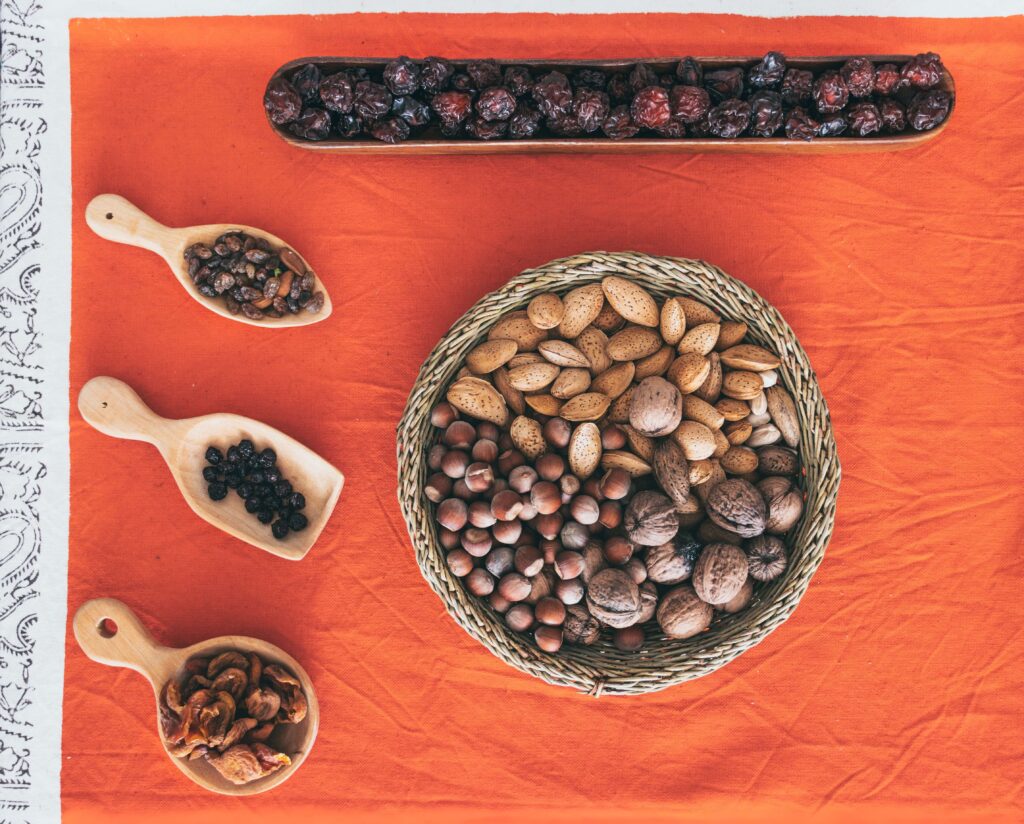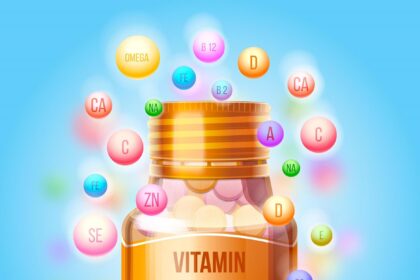Anemia is a disease in which you may feel fatigue, weakness, and breathlessness. Therefore, everything you need to know about anemia. Insufficient healthy red blood cells or hemoglobin to transport oxygen to the body’s tissues is known as anemia. Red blood cells contain a protein called hemoglobin, which transports oxygen from the lungs to the body’s other organs. Anemia can take many different forms, and it can be temporary or persistent. Further it may be mild to severe variations are also possible.
This article describes the various forms, signs, and causes of anemia as well as the available treatments.

What Is Anemia?
When you don’t have enough red blood cells or your red blood cells aren’t functioning properly, you develop anemia. Your body receives oxygen from your red blood cells, and these cells are given energy by oxygen. Your body can’t get the energy it needs to function if it doesn’t have healthy red blood cells that do their job. While some forms of anemia are mild and transient, others can be lifelong. Anemia could be fatal if left untreated.
What are the common symptoms of anemia?
The cause and severity of anemia influence anemia symptoms. Anemia can be so mild that it initially presents with no symptoms. But as the anemia worsens, symptoms typically start to appear and worsen.
Depending on the cause of the anemia, symptoms may include:
- Dizziness, lightheadness, or feeling like you are about to pass out
- Fast or unusual heartbeat
- Headache
- Pain, including in your bones, chest, belly, and joints
- Problems with growth, for children and teens
- Shortness of breath
- Skin that’s pale or yellow
- Cold hands and feet
- Tiredness or weakness
However, symptoms vary from person to person. Some people with mild anemia may experience few or no symptoms.
What is the main cause of anemia?
Some types of anemia can be inherited, and others can be brought on by certain chronic illnesses. Different types of anemia have different causes. They include:
1.Deficiency in iron –
This most prevalent form of anemia is brought on by a lack of iron in the body. To produce hemoglobin, bone marrow needs iron. The body can’t produce enough hemoglobin to fill red blood cells if it doesn’t have enough iron. Blood loss may cause difficulties for women, such as pregnant women, heavy menstrual bleeding, an ulcer, cancer, or regular use of some painkillers.
2.Anemia from vitamin deficiency –
To produce enough healthy red blood cells, the body also requires folate and vitamin B-12 in addition to iron. Lack of these and other essential nutrients in the diet can prevent the body from producing enough red blood cells.
3.Inflammation-related anemia –
Chronic inflammatory conditions can prevent the body from producing enough red blood cells. Examples include Crohn’s disease, rheumatoid arthritis, cancer, and HIV/AIDS.
4.Anemia aplastic –
This uncommon, potentially fatal anemia develops when the body fails to produce enough brand-new red blood cells. Aplastic anemia can be brought on by infections, some medications, autoimmune disorders, and coming into contact with toxic chemicals.
5.Anemias associated with bone marrow conditions –
Leukemia and myelofibrosis are two illnesses that can affect how the bone marrow produces blood. These diseases can have a variety of symptoms, from minor to potentially fatal.
6.Anemias with hemolysis –
These anemias are caused by red blood cells depleting more quickly than bone marrow can produce new ones. Red blood cell deterioration is accelerated in some blood disorders.
7.Sickle-cell disease –
This type of hemolytic anemia is inherited and can occasionally be serious. Red blood cells are forced into the peculiar sickle shape by an unusual hemoglobin. These abnormal blood cells pass away far too soon. As a result, there is a persistent red blood cell shortage.
8.Other possible causes of iron-deficiency anemia:
- A diet without enough iron, especially in infants, children, teens, vegans, and vegetarians
- Certain drugs, foods, and caffeinated drinks
- Donating blood often
- Endurance training
- A common cause is chronic slow bleed, usually from a gastrointestinal source.
What are the different types of anemia?
There are many forms of anemia, and each type has telltale symptoms. Some common types of anemia include:
- Iron deficiency anemia
- Vitamin b12 deficiency anemia
- Aplastic anemia
- Hemolytic anemia
1.Iron deficiency anemia:
The most common form of anemia, iron deficiency anemia involves the body producing too few RBCs due to a lack of iron in the body. It may develop as a result of:
- Endurance training
- Certain digestive conditions
- A diet low in iron
- Frequent blood donation
- Heavy menstruation
- Medications that irritate the gut lining
- It can cause symptoms, like Fatigue, Lightheadedness and Cold extremities.
2.Vitamin B12 deficiency anemia:
Vitamin B12 is essential for the production of RBCs. If a person does not consume or absorb enough B12, their RBC count may be low.
Some common symptoms may include Vision problems, Diarrhea, Difficulty walking, Confusion and forgetfulness, Glossitis, which is a smooth, and red tongue.
3.Aplastic anemia:
This uncommon blood disorder develops when the bone marrow is unable to make enough new RBCs. Most frequently, autoimmune diseases that harm stem cells are to blame. Despite having normal iron levels, this happens.
It can cause symptoms, such as Fatigue, Frequent infections, Skin rashes, and Bruising easily.
4.Hemolytic anemia:
When RBCs are lost more quickly than they can be replaced by the body, this type of anemia develops. This can be brought on by a number of conditions, including autoimmune diseases, infections, bone marrow issues, and inherited diseases like sickle cell disease and thalassemia.
Hemolytic anemia can cause symptoms which may include Jaundice, Dark urine, Dizziness, Fever, Abdominal pain, and Weakness.
What are risk factors for anemia?
Anemia can occur in people of all ages, sexes, and ethnicities. However, the following factors increase a person’s risk of developing a form of the condition:
- Being born prematurely
- Having a family history of inherited anemia
- Having an intestinal disorder that affects the absorption of nutrients
- Losing blood
- Being 6–24 months old
- Menstruating
- Consuming a diet low in vitamins, minerals, and iron
- Taking medications that inflame the stomach lining
- Being pregnant and giving birth
- Having a chronic illness such as aids, diabetes, kidney disease, cancer, rheumatoid arthritis, heart failure, or liver disease
What are the potential complications of untreated anemia?
If anemia not treated, it can cause many health problems, such as:
- Extreme fatigue – Daily tasks may become impossible to complete if anemia is severe.
- Issues related to pregnancy – Anemia from a folate deficiency during pregnancy may increase the risk of complications like preterm birth.
- Heart conditions – Arrhythmia, also known as a rapid or erratic heartbeat, can result from anemia. Because there is insufficient oxygen in the blood, anemia requires the heart to pump more blood. Heart failure or an enlarged heart may result from this.
- Death – Some inherited anemias, like sickle cell anemia, can cause complications that are potentially fatal. Rapid blood loss results in severe anemia and is potentially fatal.
How anemia can prevent?
Many types of anemia can’t be prevented. But eating a healthy diet might prevent iron deficiency anemia and vitamin deficiency anemias. A healthy diet includes:
- Vitamin B-12: Foods rich in vitamin B-12 include meat, dairy products, and fortified cereals and soy products.
- Vitamin C: Foods rich in vitamin C include citrus fruits and juices, peppers, broccoli, tomatoes, melons, and strawberries.
- Iron: Iron-rich foods include beef and other meats, beans, lentils, iron-fortified cereals, dark green leafy vegetables, and dried fruit.
- Folate: This nutrient, and its human-made form folic acid, can be found in fruits and fruit juices, dark green leafy vegetables, green peas, kidney beans, peanuts, and enriched grain products, such as bread, cereal, pasta and rice.
If you’re concerned about getting enough vitamins and minerals from food, ask your health care provider about taking a multivitamin.
What are possible treatment for anemia?
Anemia can be treated in a variety of ways. Each aims to raise an individual’s RBC count, which raises the blood’s oxygen content. The type of anemia a person has determines the necessary treatment. The following are some common anemia treatments:
- Iron-deficiency anemia: If present, a doctor will determine the cause of any excessive bleeding and treat it. Iron supplements and dietary changes can help.
- Vitamin deficiency anemia: Treatment options include vitamin B12 injections and dietary supplements.
- Thalassemia: Therapies for this condition include iron chelation, folic acid supplements, and, in some cases, bone marrow transplants and blood transfusions.
- Anemia brought on by a chronic illness: The doctor will concentrate on treating the underlying problem.
- Aplastic anemia: Bone marrow transplants or blood transfusions are used to treat this condition.
- Sickle cell anemia: Medical professionals treat this condition with intravenous fluids, oxygen therapy, and painkillers.
- Plasmapheresis: A blood filter, immunosuppressant medications, and treatments for infections may all be used in the management of hemolytic anemia.
- If blood loss is the root of the problem, surgery may be necessary to locate and stop the bleeding. You’ll probably need to take iron supplements and alter your diet if you have iron-deficiency anemia.
What are common foods that are high in iron?
If nutritional deficiencies are responsible for anemia, eating more iron-rich foods can help.
Some include:
- Nuts and seeds
- Fish (omega 3 fatty acids)
- Tofu
- Brown rice
- White or red meats
- Eggs
- Leafy green vegetables, such as kale, spinach, and watercress
- Pulses and beans
- Iron-fortified cereal and bread
- Dried fruits, including apricots, raisins, and prunes

Everything you need to know about anemia, talk to your doctor
If you’re exhausted or having trouble breathing but don’t know why, schedule a visit with your doctor. Hemoglobin deficiency is the primary indicator of anemia. Hemoglobin is a protein found in red blood cells that carries oxygen. When they donate blood, some people discover they have low hemoglobin levels. Make a doctor’s appointment if you are informed that you cannot donate because of a low hemoglobin level.
How is anemia diagnosed and tested?
Anemia can be diagnosed in a number of ways, but the complete blood count (CBC) blood test is the most popular approach. This examination evaluates a number of elements, including:
- Hemoglobin levels
- RBC count
- Hematocrit levels, which measure the proportion of RBC volume to total blood volume
A person’s general health can be determined by a CBC. It can also assist a doctor in determining whether to perform a background check for diseases like leukemia or kidney disease. A person is most likely suffering from some kind of anemia if their RBC, hemoglobin, and hematocrit levels are below the normal range. A healthy person’s levels could, however, deviate from this range. An accurate diagnosis can be made by a doctor using a CBC as a starting point even though it is not conclusive.
Conclusion:
When your body’s RBC count is low, it is anemia. Hence, everything you need to know about anemia disease. Anemia lowers the individual’s oxygen levels, which can cause signs like exhaustion, a pale complexion, chest pain, and breathlessness. The destruction of RBCs, decreased or impaired RBC production, and blood loss are common causes. Occasionally dietary changes are enough to prevent or treat anemia. Some anemias are potentially fatal without treatment, and others call for more extensive regimens.
You should see a doctor for testing if you consistently feel weak and exhausted. A CBC test can be used by a doctor to help identify anemia. Depending on the condition, the course of treatment may involve dietary adjustments, nutritional supplements, prescription drugs, blood transfusions, and bone marrow transplants.
FAQ
What is anemia disease?
A lack of healthy red blood cells or hemoglobin causes anemia, a medical condition that reduces the body’s ability to carry oxygen. It may cause symptoms like weakness, exhaustion, shortness of breath, and pale skin.
How is iron-deficiency anemia treated?
Iron-deficiency changing one’s diet or taking care of an underlying condition that is causing blood loss are two common ways to treat anemia. Anemia is typically treated by addressing the underlying cause of the iron deficiency. In order to replenish the body’s stores of iron, doctors frequently advise taking iron supplements and eating a diet high in foods like lean meats, leafy greens, and legumes.
Can anemia be prevented through diet and lifestyle changes?
Yes, you can prevent or reduce anemia by dietary measures like consuming iron-rich foods, including vitamin C sources to enhance iron absorption, and maintaining a balanced diet that includes a variety of nutrient-rich foods.
Are there any natural remedies or supplements for anemia?
Anemia can be treated with some natural treatments and supplements, such as vitamin C supplements, certain nutritional supplements, such as vitamin B12 and folate, and iron-rich herbs like nettle and yellow dock. It is important to speak with a healthcare provider before trying any natural treatments to ensure their safety and efficacy.
Is anemia more common in certain age groups or demographics?
No, anemia can affect people of all ages and demographics, but some groups are more susceptible to it than others, including pregnant women, young children, older adults, and people with chronic illnesses or poor nutrition.
Can anemia be hereditary or genetic?
Yes, sickle cell anemia and thalassemia are examples of inherited genetic anemias that can be passed down from parents to their offspring.
Reference Used:
https://my.clevelandclinic.org/health/diseases/3929-anemia
https://www.webmd.com/a-to-z-guides/understanding-anemia-basics





